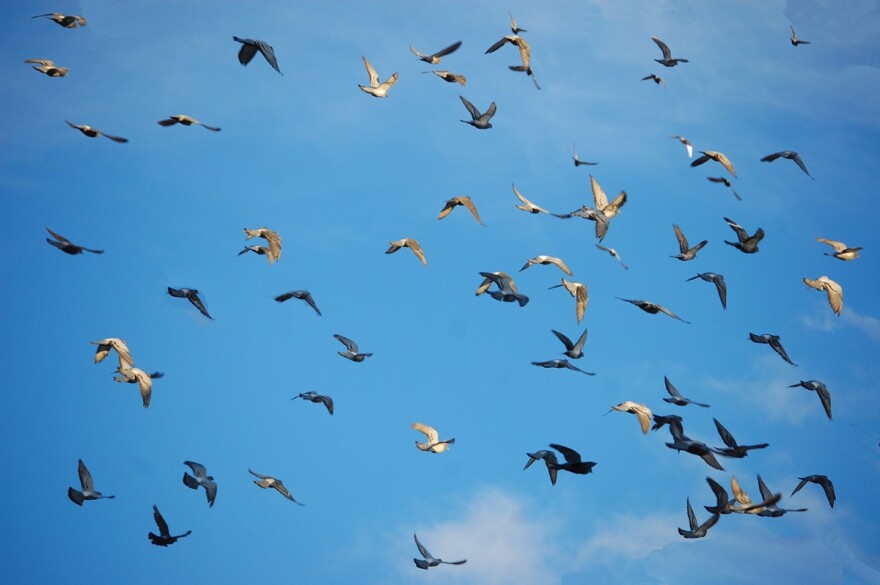More than 700 species of birds reside in the U.S.; nearly half of those fly south for the winter. They take these periodic, large-scale journeys to find resources, such as insects to eat and places to roost.
But once their migratory instincts are triggered, how do birds navigate their way? And how do they find their wintering grounds with such pinpoint accuracy?
No single answer can satisfy those questions because different species of migratory birds use different homing skills. Also, adult birds emphasize different instincts and cues compared to young birds.
There’s evidence that many species use celestial objects as a guide. Waterfowl such as geese and ducks migrate during daytime, using the path of the sun to keep on course, whereas songbirds such as warblers and orioles move at night, using the stars to stay the right direction. Yet, while we know that many birds have an internal compass, it’s uncertain how they are able to tell “North” from “South.”
Plus, a bird’s compass may tell it which way to go, but how does it find its goal? Many use the magnetic field of the earth to gauge their longitude and latitude and zero in on their destination. This sense gives young birds a path to follow to the appropriate spot. As they grow, they will return to this exact spot year after year. Other birds, such as gulls and albatrosses, may use their sense of smell to map their way.
One thing is sure: the story of how birds accomplish their marvelous migrations is incomplete. That may be one of many reasons they continue to astound us as they come and go.
Reviewer: Susan Hengeveld, Indiana University
Read More
- How Do Birds Migrate And Reach Their Destination Without A Map?
- The Longest Migration On Record: Sooty Shearwaters
- Dragonfly Migration
Sources
- All About Birds - The Basics: How Birds Navigate When They Migrate
- All About Birds - The Basics Of Bird Migration: How, Why, And Where
More than 700 species of birds reside in the U.S.; nearly half of those fly south for the winter. They take these periodic, large-scale journeys to find resources, such as insects to eat and places to roost.
But once their migratory instincts are triggered, how do birds navigate their way? And how do they find their wintering grounds with such pinpoint accuracy?
No single answer can satisfy those questions because different species of migratory birds use different homing skills. Also, adult birds emphasize different instincts and cues compared to young birds.
There’s evidence that many species use celestial objects as a guide. Waterfowl such as geese and ducks migrate during daytime, using the path of the sun to keep on course, whereas songbirds such as warblers and orioles move at night, using the stars to stay the right direction. Yet, while we know that many birds have an internal compass, it’s uncertain how they are able to tell “North” from “South.”
Plus, a bird’s compass may tell it which way to go, but how does it find its goal? Many use the magnetic field of the earth to gauge their longitude and latitude and zero in on their destination. This sense gives young birds a path to follow to the appropriate spot. As they grow, they will return to this exact spot year after year. Other birds, such as gulls and albatrosses, may use their sense of smell to map their way.
One thing is sure: the story of how birds accomplish their marvelous migrations is incomplete. That may be one of many reasons they continue to astound us as they come and go.


